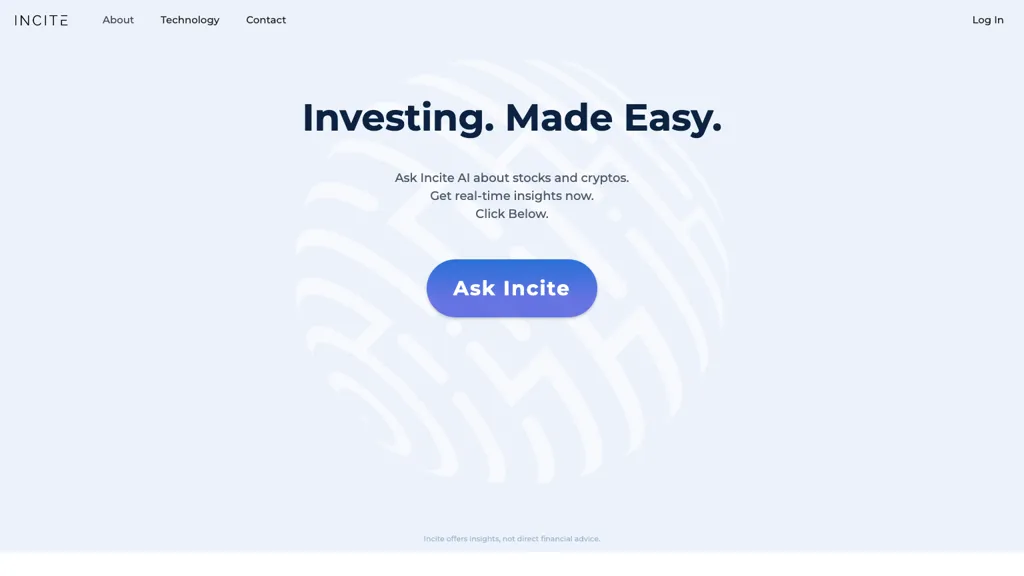20 Excellent Advice On Selecting AI Stock Trading Platform Sites
20 Excellent Advice On Selecting AI Stock Trading Platform Sites
Blog Article
Top 10 Suggestions For Evaluating Ai Trading Platforms For The User Interfaces They Provide And Experience
User Interfaces as well as the User Experiences are essential for the user-friendliness of an AI stock-predicting/analyzing trading platform. Poorly designed interfaces can hinder decision-making even if AI models behind it are robust. Below are the top ten suggestions for assessing UI/UX.
1. Examine the ease of use, intuitiveness and simplicity
Navigation: Ensure the platform is simple to navigate, with easy-to-read menus, buttons and workflows.
Learning curve: Assess the speed at which a novice user can comprehend and utilize the platform, without requiring lengthy training.
Consistency: Search for uniform patterns of design (e.g. buttons, color schemes etc.) across the whole platform.
2. Look for Customizability
Dashboard customization: Check whether the dashboard is customized to display relevant metrics, charts, or data.
Layout flexibility is important You should be able to alter the arrangement and size of charts, widgets, and tables.
Themes and preferences: See whether the platform provides dark and light modes or other visual preferences.
3. Examine Data Visualization
Quality of the chart: Make sure that the platform has interactive charts that can be zoomed and have panning capabilities (e.g. line charts or candlestick charts, etc.).
Visual clarity - Check to see if data are clearly displayed, using the appropriate labels, legends or tooltips.
Updates in real-time: Make sure that visualizations change in real time to reflect market trends.
4. Test for Speed and Reactivity
Loading Time: Make sure that your platform loads quickly, even if you are managing large amounts of data.
Performance in real-time: Make sure your platform is able to handle data feeds immediately without lags or delays.
Cross-device Compatibility: Make sure that the software works flawlessly with different devices (desktops or smartphones).
5. Evaluate accessibility
Go through the mobile app to determine if it has all the features you require to conduct business on the move.
Keyboard shortcuts. Ensure that your platform is compatible with keyboard shortcuts.
Accessibility features - Make sure that the platform is compatible with accessibility standards.
6. Utilize the Search and filter Functions
Search efficiency: The platform should allow users to quickly search indexes, stocks and other assets.
Advanced filters: Determine whether the user is able to apply filters to achieve specific results (e.g. by capitalization, sector, or performance metrics).
Saved searches: Determine whether the platform permits users to save searches they frequently use or filters.
7. Check for Alerts & Notifications
Customizable Alerts: Users can make alerts that are based on specific situations, such as price thresholds or spikes in volume and news developments.
Notification Delivery: Examine to see if notifications can be delivered in multiple methods (e.g. via SMS, email or app notifications).
Check for promptness and the accuracy of alerts.
8. Integrating Other Software
Broker integration: Ensure your broker account is seamlessly integrated to your broker account to facilitate trade execution.
API access: Check whether the platform provides API access for users who are advanced to develop custom workflows or tools.
Third-party Integrations: Ensure the compatibility of your platform with other software (e.g. Excel, Google Sheets and trading bots).
9. Examine Support and Help Features
Tutorials on Onboarding. Make sure that new users have the ability to access tutorials.
Help center: Ensure the platform is well-equipped with a help center or knowledge base.
Customer support: Verify whether the platform provides responsive customer support (e.g., live chat, email, telephone).
10. Test Overall User Satisfaction
User feedback: Reviews and testimonials are used to determine the general satisfaction of the users with the platform UI/UX.
Free trial period: Test the platform for free and test its functionality.
Error handling: Find out how the platform handles errors or edge instances (e.g., invalid inputs and server downtime).
Bonus Tips
Aesthetics. Functionality is essential however, a visually pleasing layout can improve the experience of users.
Performance under stress Test the platform to make sure that it remains flexible and stable in periods of high volatility.
Check the community and forums to see if there is an active forum or user group in which members can discuss tips and provide feedback.
With these suggestions You can easily evaluate the user interface and experience of AI trading platforms for stock prediction or analysis and ensure that they are efficient, user-friendly, and aligned with your trading needs. A great UI/UX will enhance your ability to make informed choices and also perform trades effectively. Follow the top rated using ai to trade stocks examples for site recommendations including chatgpt copyright, ai for investment, ai trade, best ai trading software, ai stock market, ai stock, chatgpt copyright, ai for trading, trading with ai, trading ai and more.
Top 10 Tips For Risk Management Of Ai Trading Platforms That Can Predict Or Analyze The Price Of Stocks.
A platform for trading that makes use of AI to forecast or analyze stocks must have a solid risk management process. This can protect your capital investment and reduce any possible losses. Platforms with strong risk management capabilities will help you navigate the turbulent stock markets and make an the right decision. Below are the top 10 tips to evaluate the risk management capabilities of these platforms.
1. Examining Stop-Loss or Take Profit Features
Customizable levels: Ensure the platform lets you determine take-profit and stop-loss limits for each trade or strategy.
Make sure to check the platform whether it is compatible with trailing stopped which adjusts automatically as the market shifts your way.
If the platform provides the option of a stop-loss order that guarantees your trade is closed at the price specified in markets that are volatile, you can be confident of a profitable trade.
2. Assessment Position Sizing Tools
Fixed amount. You should have the option of defining the size of your positions in terms of a fixed dollar amount.
Percentage of Portfolio Determine if it is possible to set the position size in percentage of your portfolio total to control risk in a proportional way.
Risk-reward Ratio: Verify that the platform supports setting up individual risk-reward levels.
3. Make sure you are using Diversification Aid
Multi-asset trading: Make sure the platform allows trading across multiple asset classes (e.g. ETFs, stocks, forex) to diversify your portfolio.
Sector allocation: See if the platform provides tools for monitoring and managing exposure to sectors.
Diversification of geographic risk: Check if the platform supports trading in international markets in order to spread geographical risk.
4. Evaluation of leverage and margin controls
Margin requirements: Ensure the platform clearly states the requirements for margin for leveraged trading.
Examine the platform to determine whether it lets you set limits on leverage to reduce risk.
Margin calls: Verify if the platform provides regular notifications on margin calls to avoid account liquidation.
5. Examine Risk Analytics and Reporting
Risk metrics. Make sure your platform is equipped with the most important risk indicators (e.g. VaR Sharpe Ratio, Drawdown) that are pertinent to the portfolio you are managing.
Scenario assessment: See whether you can simulate various market scenarios using the platform to assess potential risks.
Performance reports: Ensure that the platform provides you with detailed information on the performance of your investments, including returns that are adjusted for risk.
6. Check for Real-Time Risk Monitoring
Portfolio monitoring: Ensure your platform provides real-time monitoring of your portfolio's risk exposure.
Alerts: See if you receive real-time alerts for associated with risk (e.g. stop-loss triggers and margin breaches).
Take a look at the risk dashboards. If you wish to see a complete picture of your risks, be sure that they're configurable.
7. Assess Stress Testing and backtesting
Stress testing. Check that your platform allows for you to stress test your portfolio or strategy under extreme market circumstances.
Backtesting. Check whether the platform permits backtesting, which is the use of historical data to evaluate the level of risk and performance.
Monte Carlo: Verify the platform's use of Monte Carlo-based simulations for assessing the risk and modeling a range of possible outcomes.
8. Assessment of Compliance with Risk Management Regulations
Compliance with the regulatory requirements: Make sure the platform meets the relevant risk management regulations in Europe and the U.S. (e.g. MiFID II).
Best execution: Check if the platform is in line with the best execution methods. It will guarantee that transactions are completed according to the highest price possible in order to reduce slippage.
Transparency. Verify that the platform is clear and clear about risks.
9. Examine for Risk Parameters that are user-controlled
Custom Risk Rules: Ensure that you are able to define your own rules for risk management (e.g. the maximum amount of daily loss, a maximum size of a tradable position).
Automated risk controls: Determine if the platform can automate the enforcement of risk management rules based on your predefined criteria.
Check whether the platform permits manual overrides for automated risk control.
Review Case Studies, User Feedback Review Case Studies, User Feedback Case Studies
User feedback: Use user reviews to determine the platform's capacity to manage the risk.
Case studies Find case studies, or testimonials that demonstrate the platform's capability to manage risk.
Community forums: See whether the platform hosts an active user community in which traders discuss risk management tips and strategies.
Bonus Tips
Trial period: You can make use of a demo or a no-cost trial to test out the risk management tools of the platform.
Customer Support: Make sure that the platform can offer a full support service for any risk management related concerns or questions.
Check for educational resources.
The following tips can assist you in evaluating risk management capabilities provided by AI stock-predicting and analyzing platforms. You will be able pick a platform that can ensure your capital is protected while minimizing the possibility of losses. To stay out of volatile markets and achieve long-term trading successes it is essential to use a robust software for managing risk. See the top best ai stock prediction advice for blog tips including ai for trading stocks, ai stock investing, best ai stock prediction, chart analysis ai, best ai stock prediction, stock trading ai, ai software stocks, ai stock trader, ai share trading, stock trading ai and more.